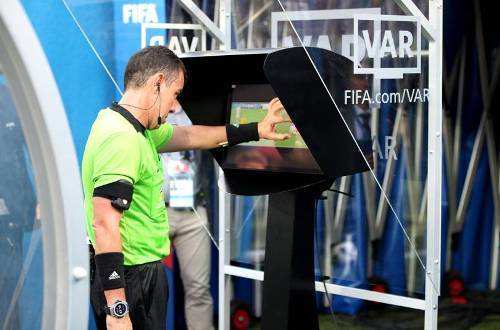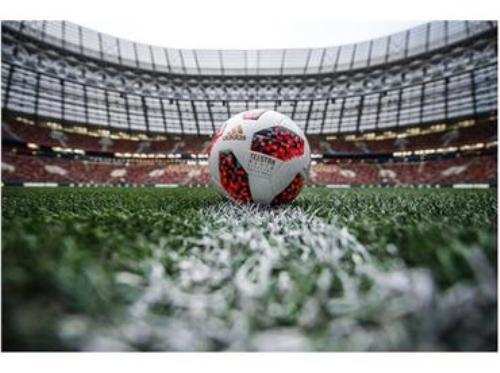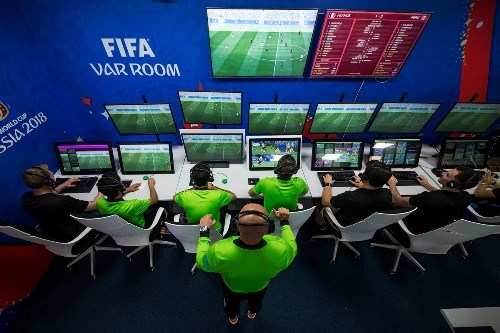FIFA 2018: Could you spot these 5 invisible game-changers?
The Sunday World Cup folded with a lot of debate (after all, it was football- so fans had to thump fists, spill beer, flick fingers and argue after the game too). But even a few years back, no one could have expected the fizz and steam to be around a penalty (remember the flak that Argentine referee Nestor Pitana got and the penalty for Croatia’s Ivan Perisic that changed France’s fate from a level 1-1 to 4-2?) awarded using a video replay system
From the first radio transmission of a game that Uruguay saw in 1922, football has been dribbling with technology in hot and cold ways. This year made it quite a Sweeper though…
The Sunday World Cup folded with a lot of debate (after all, it was football- so fans had to thump fists, spill beer, flick fingers and argue after the game too). But even a few years back, no one could have expected the fizz and steam to be around a penalty (remember the flak that Argentine referee Nestor Pitana got and the penalty for Croatia’s Ivan Perisic that changed France’s fate from a level 1-1 to 4-2?) awarded using a video replay system.
But Lukas Brud, IFAB secretary at the International Football Association (IFAB) was right when he warmed up to this new playground, “Soccer has always been very conservative when it came to the introduction of technology..We knew that we are opening a very wide door and that if we started down this path, there would be no way back.”
In fact, VAR or Video Assistant Referee is just one example that was put to work and in many situations during the tournament this time. There were so many other technologies that were doing more than just watching the ball closely or being hurlers on the ditch this time at FIFA. These are post- Sepp Blatter days for football and technology for sure.
Let’s take a tab- how:
- VAR
After a two-year trial, FIFA president Gianni Infantino was more than excited to embrace VAR at a new level even if European soccer governing body UEFA or England’s Premier League were wishy-washy about it.
From the initial meeting at FIFA’s den in Zurich in October 2015, where high-profile controversies of the 2010 World Cup and World Cup of 2014 were reckoned well, a new way to help referees and to achieve fairer outcomes in a match pushed VAR further inside the football field.
Even then, the tenets of minimum interference and maximum benefit have been top-drawer words in many cases, with its use being restricted to ‘clear and obvious errors’ and in situations such as possible infringement just before a goal, penalties, red cards, and or wrong warnings by a referee.
No wonder, German Bundesliga, the Italian Series A, and the Portuguese Primeira Liga, the FA Cup have moved fast on trials and back on doubts against VAR.

You know what was the number 1 fear against VAR? That it would take away all the argument and the fun. Well, this time VAR has put that fear to bed for sure – the arguments have only boiled further.
But so has its role. It is evolving nicely to ensure that no clearly wrong decisions are made in conjunction with the award or non-award of a penalty kick. It also works to inform the referee so that the correct player can be disciplined. A video assistant referee team has access to all relevant broadcast cameras and dedicated offside cameras in a central room. When the referee informs the VAR, or the VAR recommends to the referee that a decision/incident should be reviewed, a video footage is reviewed by the VAR, who advises the referee via headset what the video shows. Once the information is accepted by the referee from the VAR and an appropriate action/decision is taken– the plot and direction could, of course, change a lot.
Incidentally, as VAR assists more referees in tricky decisions; use of Decision Review System (DRS), was opposed in India under the argument that it was not ‘100%’ and due to non-reliable ball tracking.
Lines have started blurring, as always. If Nuno Gomes, Former Portuguese National player, has been all praise – “With the use of the technology, the mistakes will be diminished and there will be more justice in football.”; then Brazilian players reminded how defender Miranda was pushed by Steven Zuber when he headed home Switzerland’s equaliser in the second half of their Group E opener. In short, they asked – why did you not use VAR before?
Well, we know what Lukas Brud says best – “With all the 4G and Wi-Fi in stadia today, the referee is the only person who can’t see exactly what is happening and he’s actually the only one who should.”
- GLT
Goal Line Technology is quite a wing-back for VAR. Created with the Dutch Refereeing 2.0 project, if VAR reinvented refereeing, (note that the FIFA Referee Committee selected 13 Referees, to act solely as video assistant referees during the 2018 FIFA World Cup Russia); then Goal-Line Technology (GLT) did its share of contribution and controversy too. We heard how Russian news outlets reported fire-alarm detectors in the Luzhniki Stadium using the same frequency as GLT, making the world wonder if the decision-aiding system was ever compromised. But aside from those brickbats, GLT, which arrived for the first time to support match officials in Brazil, continued its use to capture the ball’s position in 3D.

So yes, GLT does help to indicate whether a goal has been scored in a matter of second. A high-level of satisfaction has been reported by match officials and it continued its amazing footwork in Morocco too. If 14 cameras can capture up to 500 frames per second, then swiftly send the image to an image processing system allowing 3D coordinates of the ball to be monitored and a camera sending a signal to the referee’s watch when the entire ball crosses the goal line – what else can you ask for?
Just one more thing..
- EPTS
Or what we better call – Electronic Performance & Tracking Systems (EPTS) that are armed with the whole enchilada of camera-based, micro-electromechanical devices (accelerometers, gyroscopes) and wearable technologies – for better control on player and team performance. EPTS track player (and ball) positions, whip them together with heart-rate monitors and other devices for better load measurement and grip on physiological parameters. Players are getting used to sharper, more precise, smarter, but above all, non-invasive systems.
- The Ball itself – and AI
How can we forget the official soccer ball here! Telstar 18 and Mechta, from Adidas, gave us a taste of embedded NFC chips to communicate with smartphones. Then there was AI (Artificial Intelligence), via IBM’s Watson that was churned and squeezed for requests for footage, social media juice, virtual reality and 360-degree content – making the experience much more immersive and adrenaline-packed than ever.

Who could have thought that technology would become so indispensable and useful for football too?
But did Brazilian playwright Nelson Falcão Rodrigues not kick this well?
“In football, the worst blindness is only seeing the ball.”
Well, we all have certainly moved much beyond that with this year’s football Mecca. Let’s see what the next one brings.
The Author credits the following references which enabled her to write this piece for our readers… Wired – UK, Reuters, Hindustan Times, Fifa, Sun Republic, Adidas, The Sun – UK
To join us on Facebook Click Here and Subscribe to UdaipurTimes Broadcast channels on GoogleNews | Telegram | Signal



